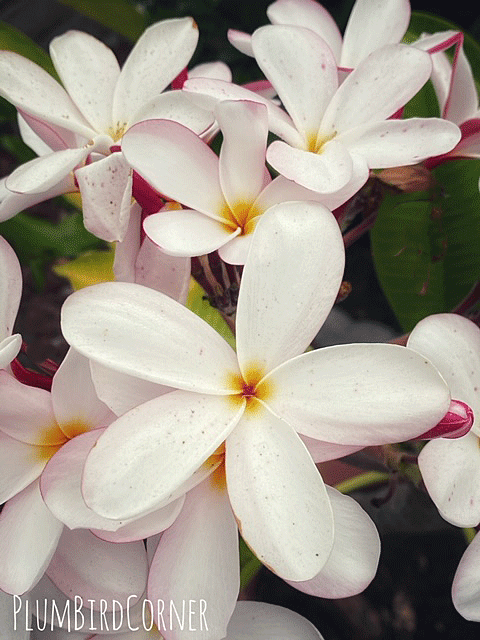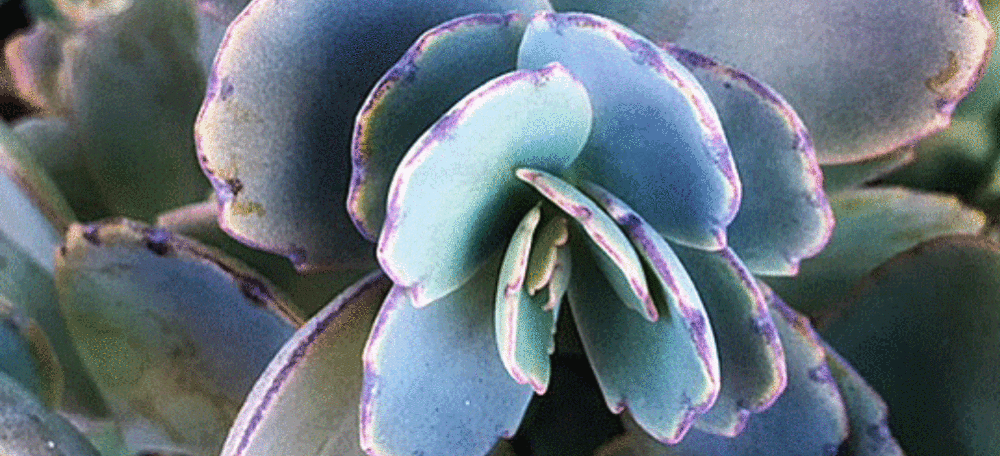
Plumeria is cultivated as a shrub or small landscaping tree. It’s part of the dog-bane family and is native to tropical America, from Brazil to Mexico, and in the Caribbean.
Plumeria flowers are used in Hawaii, Tahiti, Fiji, and several other Pacific islands for making leis. The flowers come in shades of white, yellow, pink, orange, purple, lilac, and red. Plumeria flowers are most fragrant at night. Blossoms are produced March to October. Petal thickness and leaves differ depending upon the variety. Plumeria flowers are not toxic, but other parts of the plant are. Best not to grow indoors if you have pets.
They are easy to grow in containers and most need minimal care, see below.
Care Instructions
- Water Plumeria deeply, then allow to dry during their growth season.
- Fertilize every two to three weeks, while actively.growing,
- They do best in full sun. Mine sits next to the lemon tree in our yard.
- Plumeria has a hardiness zone of 9-11.
- They stop growing when the average ambient temperature goes below 65 degrees.
- Its dormancy period begins when night temperatures drop below 55 degrees.
- Do not water heavily in winter, or fertilize. Holding off on water and fertilizer encourages the plant to go into its dormant period. If temperatures drop below 35 degrees you can protect in-ground plants with frost cloths. Plumeria grown in containers can be stored indoors over the winter. Remember to keep it away from pets. Plumeria do not need light while dormant, so can be stored in a garage or basement. When new growth appears in spring you can resume watering and fertilizing. When moving your Plumeria back outdoors, treat it gently. Keep in partial shade until the plant has been re-acclimated to the outside. We live in the zone 10 area of southern California, and my plant remains outdoors year round.
Propagation
- Cut leafless stem tops in the spring while pruning the plant. Let the cuttings dry for about seven days before planting. When the cutting ends have dried, place in a pot with well draining soil. Place the cutting approximately four inches into the soil. Water well and allow to drain. Water approximately once a week unless you are having unusually hot weather, which we have had this summer. New leaf growth will be the sign you are looking for. This means the cutting has successfully rooted and you can plant in well drained soil,
- When you see signs of new growth, follow the instructions above.This has been a great year for our Plumeria. I think perhaps it has liked the hot weather and my routine of fertilizing.
Pruning
- If your Plumeria gets too leggy, you should prune it. The best time is at the start of its growing season, which is spring. New growth always makes a plant look healthy and attractive. Remove any damaged or unsightly branches. It is a good idea to use garden gloves, as some people can get skin irritation from the sap.
- I hope this information had been helpful. I knew nothing about Plumeria when my husband brought a cutting home. His friend, Cliff had given him the cutting. I was told to simply stick it in potting soil, and that is what I did. I wish I’d known a little more about it then. The Plumeria did survive as you can see in the photo above, which proves it is an easy plant to grow.
